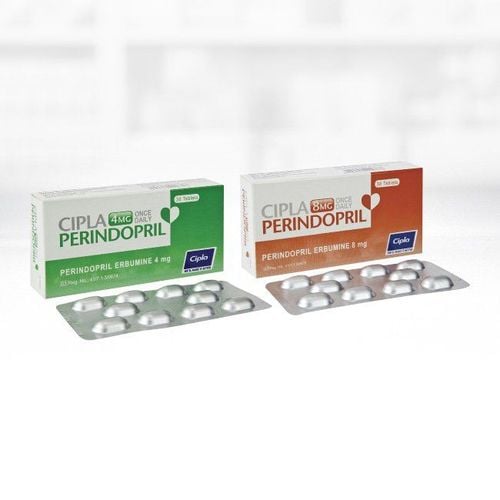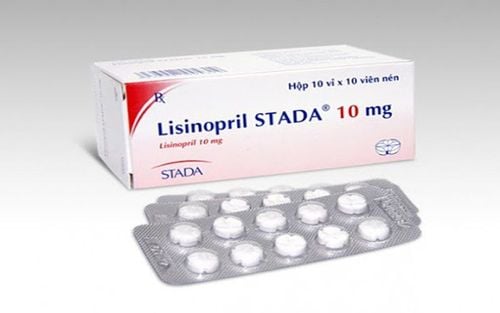This is an automatically translated article.
Perinatal cardiomyopathy is a form of dilated cardiomyopathy with heart failure presenting in the last month of pregnancy, or the first 5 months postpartum. So can myocarditis be completely cured, how to treat and prevent it, we will find out soon.
1. What is perinatal myocarditis?
Perinatal myocarditis, also known as peripartum cardiomyopathy, is a fairly rare form of heart failure. At that time, the patient will experience an enlarged heart (or enlarged heart) and weaker, making the heart's pumping function to go to other organs is reduced. However, any pregnant woman is at risk, even those who have no risk factors or have never had any heart disease.
The disease usually appears in the last month of pregnancy or the first 5 months after giving birth. The most important thing when encountering this disease is to recognize the symptoms as early as possible. Diagnosis and appropriate treatment are aimed at preventing the disease from getting worse, and at the same time reducing complications that may threaten the health of the mother and the fetus.
2. Symptoms of the disease
According to reports, perinatal myocarditis often has some typical symptoms, similar to heart failure syndrome such as:
Abnormally fast heart rate. Palpitations or chest tightness. Feeling short of breath, especially while lying down or resting. Fatigue is too expensive, especially during physical activity and vigorous exercise (due to lack of blood pumping to the organs). Frequently short of breath. Swelling in the feet and ankles (due to fluid retention). Frequent urination at night, increased frequency of urination. Cough while lying down. In addition, some women may also have swollen veins in the neck, due to the blood not circulating effectively. Patients should note that heart palpitations, shortness of breath, and ankle edema are also common manifestations in the last months of pregnancy. Therefore, it can cause confusion, difficulty in detecting and diagnosing the disease correctly. For postpartum women, the diagnosis of neonatal myocarditis will be easier.
3. Causes of disease
To date, there has not been a complete and accurate report on the cause of the disease. Although the rationale for the development of perinatal cardiomyopathy is unknown, specialists believe that increased stress on the heart during pregnancy, combined with other risk factors, increases the risk of developing perinatal cardiomyopathy. to this disease. In particular, some common risk factors can be mentioned such as:
Diabetes . Obesity, overweight. Hypertension. Pregnant women are malnourished. Women who smoke, drink too much alcohol, or are addicted to alcohol. People who have been pregnant with twins (multiple pregnancy) or have been pregnant many times before. People with a history of heart-related diseases such as coronary artery disease, myocarditis, viral infections of the heart. Women after giving birth prematurely (premature birth). Older pregnant women (women over 30 years old). In addition, certain genetic diseases can also be factors that increase the risk of perinatal myocarditis in postpartum women and during pregnancy.
4. Answer: Can perinatal myocarditis be completely cured?
Although in fact perinatal cardiomyopathy is a rather serious medical condition, if it is detected in time and applied with appropriate treatment, the possibility of recovery is very high. Most serious complications are encountered because the disease is detected late, so regular monitoring of the body's manifestations and periodic examination plays a particularly important role, in order to protect the health of the patient. mother and fetus.
Most women with peripartum cardiomyopathy, with appropriate treatment, will return normal heart function after about 6 months. In some more severe cases it can take up to several years for a full recovery. However, in many cases, even with successful treatment, the disease can affect the patient's health for the rest of his life.
For women who have had perinatal cardiomyopathy during pregnancy, there is a high chance that it will happen again in subsequent pregnancies, even if they have fully recovered before. Especially in subsequent pregnancies, symptoms of heart failure can be even worse and worse than before.
5. Diagnostic method
As a first step, your doctor will assess your symptoms, take your medical history, and perform a physical exam through a stethoscope to check for sounds in your lungs and heart. Then carry out some other necessary tests such as:
Blood tests: To check the functioning of the liver, kidneys, thyroid gland and especially detect hormones that show that the heart is under stress or cause. other leading to symptoms of infection, anemia. Urinalysis: To check for preeclampsia (high blood pressure associated with pregnancy) or to detect infection. Electrocardiogram (ECG): To help doctors see signs of arrhythmias (irregular heartbeats) by recording electrical signals conducted through the heart. Chest X-ray: Is a basic imaging test technique, thereby helping the doctor to accurately examine the structure and size of the heart and lungs. On the other hand, the amount of fluid contained in or around the lungs can also be observed. Echocardiography: Using sound waves to create images of the heart, so that the doctor can see the structure and function of the heart muscle and valves. On the other hand, this method also checks for the presence of blood clots in the chambers of the heart. Cardiac MRI: In some cases, an additional MRI scan may be ordered to provide additional information about the heart's function and structure. Coronary angiogram: To check whether the arteries are blocked or narrowed due to coronary artery disease. Besides the main testing techniques mentioned above, the doctor will also make a diagnosis to rule out other cardiovascular diseases that also lead to the risk of heart failure such as: pulmonary hypertension, congenital heart disease, etc. myocardial infarction, heart valve, myocarditis...
6. Methods of treatment
The main goals of the treatment of perinatal cardiomyopathy are to keep excess fluid from pooling in the lungs, control the symptoms of the disease, and help the heart recover as best as possible. Patients may be treated to improve symptoms with some of the following drugs: Angiotensin-converting enzyme (ACE) inhibitors, angiotensin II receptor blockers, beta blockers, diuretics, anticoagulants , Digoxin. Some other drugs also have a direct effect on the development of the fetus or are partly excreted in breast milk, thereby affecting the health of the child. Therefore, in each specific case, the doctor will prescribe separate drugs, depending on the time of detection of the disease during pregnancy or after giving birth.
In cases where drug treatments do not bring the expected results or the disease tends to get worse, the patient may need a heart transplant.
In addition, following a low-salt diet to control blood pressure, completely abstaining from alcohol, tobacco, and stimulants is also an effective measure in the treatment of peripartum cardiomyopathy.
7. Methods of disease prevention
The prevention of perinatal cardiomyopathy is especially important for women, especially during the reproductive period and for first-time mothers. Some good eating habits and daily activities can help you reduce the risk of diseases such as:
Build a healthy diet, minimize salt and fat. Exercise regularly. Maintain a healthy weight. Do not use tobacco, stimulants, do not drink alcohol. We have just answered the question of whether perinatal myocarditis can be completely cured. Although this is a serious disease, it is still curable with early detection and proper treatment. Therefore, please monitor your health, your body's expression regularly and have regular health check-ups, to ensure the health of both mother and fetus.
Please dial HOTLINE for more information or register for an appointment HERE. Download MyVinmec app to make appointments faster and to manage your bookings easily.













